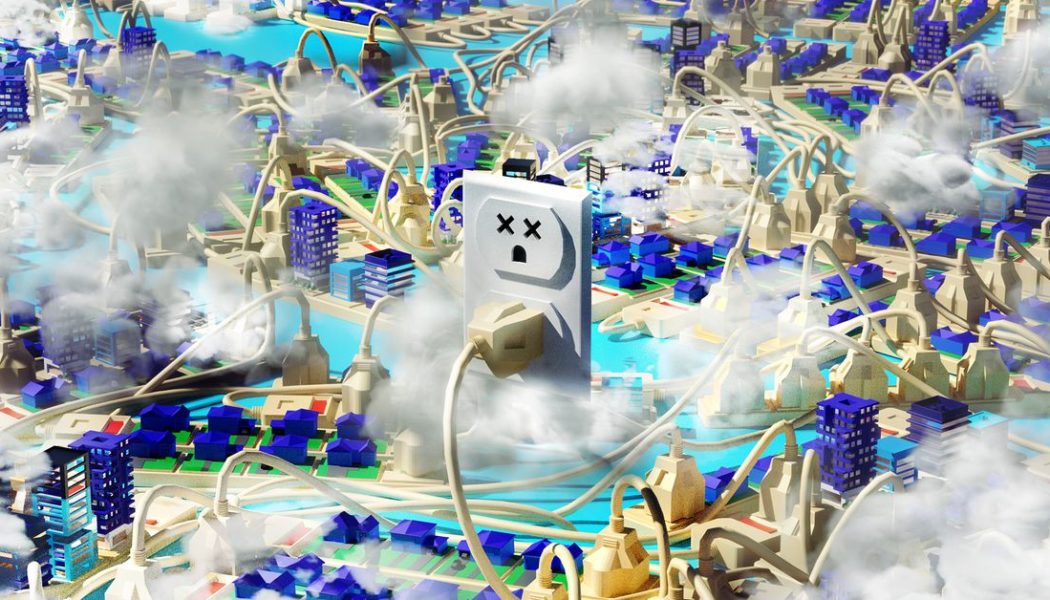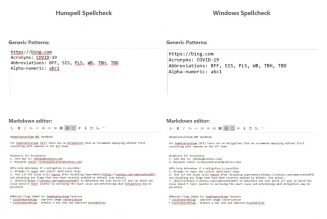
In the future, our vehicles and homes will be in constant conversation with the power grid. Smart thermostats will send information about how much energy the home is using or potentially wasting to heat or cool itself. Solar panels will say how much energy they have on hand, while electric vehicles will share information about when and where they’re charging and how much juice they need for their travels. Solar and EV batteries might even offer up the energy they’re storing in case it’s needed elsewhere.
“You just plug it in, and somehow it automatically talks to its nearest neighbors,” explains Ben Kroposki, a director at the National Renewable Energy Laboratory. “[It] says, ‘Hey, I just want to let you know I’m out here. I can provide these kinds of services back.’”
That conversation is the backbone of what’s called a “smart grid.” While America’s aging grid system was built to send electricity in one direction — from power plants to homes and businesses — smart grids are a two-way street. Homes and buildings send information and electricity back to the grid or to other homes and buildings. An electric vehicle battery, for example, might be able to provide power to an area in the middle of a blackout. A smart grid also listens for directions from the utility, so that it charges whenever solar or other renewable energy is most abundant.
It’s a simple enough idea that for more than a decade has been sold as a way to improve the efficiency, environmental impact, and resiliency of the power sector. But electricity grids still have a long way to go to get “smart.” They’ve managed to fail spectacularly under the stressors of climate change and more extreme weather.
After years of underinvestment, there’s renewed hope that long-awaited smart grids might actually come to fruition. President Joe Biden can’t reach his goal of getting the power sector to run on 100 percent clean energy by 2035 without a smarter grid. And grids can’t get smarter without the kind of urgency that Biden has injected into overhauling America’s infrastructure.
“This probably is the most exciting time in the power system history in the last 50 years,” Kroposki says.
While Biden’s clean energy goals are vital for staving off a deeper climate crisis, the plan has exposed some weaknesses in our current grid system that a smart grid could help solve. For starters, old grids were built to accommodate a constant flow of electricity; power plants can ramp generation up and down at will to deliver as much energy as people demand.
Wind and solar power aren’t so consistent. When it’s sunny and gusty, too much energy might overwhelm the grid, leading to some of it going to waste. There also isn’t enough energy storage — aka batteries — to hold onto that excess renewable energy so that it can be used when sunshine and wind die down.
A smarter grid can better manage power demand, making use of renewable energy when it’s most abundant and preventing energy shortages. Embattled California utility PG&E, which has come under scrutiny for pervasive rolling blackouts in recent years, has partnered with BMW to implement “smart charging” for its electric vehicles. Their pilot “smart charging” program incentivizes EV drivers to charge their cars whenever there’s excess renewable energy, typically in the middle of the day.
That kind of coordination can also prevent blackouts by taking pressure off the grid when there’s peak demand, typically when people come home from work in the evening or crank up their air conditioners in the summertime. Managing that demand will become even more important in the race to electrify homes, buildings, and transportation so that they can run on renewable energy. Some cities have banned new gas hookups in favor of electricity, and California banned the sale of internal combustion engine vehicles starting in 2035. Electricity grids will have to brace themselves for all those changes. “We’re going to need to speed up the pace of the grid investments in order to keep up with everything that’s happening outside the grid,” says Karen Wayland, CEO of the GridWise Alliance whose members include utilities, tech, and energy companies.
A flood of new electric vehicles could overwhelm old, creaky grids. But EV batteries could become an asset in an updated, smarter grid. The same is true for residential solar power systems with batteries. They might provide backup power when extreme weather causes problems, like when a storm forces a power plant offline or when a heatwave drives up power demand for air conditioning. But to be able to do that, utilities need to build out a way to communicate with those batteries so that they know when they’re available and how much capacity they have.
In the middle of an outage, a smart grid can also sense excess power being wasted. It might have been able to divert power from empty downtown Houston skyscrapers to people facing freezing temperatures inside their homes during the Texas freeze earlier this year. “In laser, scalpel-like precision, you can turn the building lights off or down … and avoid having to do the rolling blackouts by being able to connect in real time to those assets,” Michael Bates, global general manager of energy at Intel, told The Verge at the time.
Seeing the potential of smarter grids, the Obama administration funneled $11 billion toward developing smart grids and the reduction of power outages. But the money wasn’t enough. Outages have been on the rise since 2009, when Biden announced the investment as part of an economic stimulus package.
Obama’s initial investments spurred the adoption of smart meters in the US, which can tell utilities how much energy a household is using at regular intervals. (Before that, utility workers had to come and read the meters). The future will be more granular; utilities may be able to read how much energy each appliance in your home is using. That initial funding was only a drop in the bucket in terms of what’s needed to unlock the full potential of smart grids. A 2011 report by the Electric Power Research Institute estimated that it would cost up to $476 billion over 20 years to fully modernize the grid. To make things harder, the Trump administration dismantled a smart grid advisory board that Obama had started and took other actions to kneecap grid modernization research.
Similarly, Obama set the US on course to slash greenhouse gas emissions — but not with the same urgency we’re now seeing under the Biden administration. That’s in part because so much time has been wasted, and the climate crisis has only grown more destructive and exacerbated by disasters that batter energy grids. “The utilities and the markets still felt like it was more of an evolution,” Bates tells The Verge. “I think everyone’s now starting to see this more as a revolution.”
That revolution is gaining momentum. A new advisory council formed last week to push for funding to modernize the power sector. Representatives from labor and environmental groups, utilities, and tech companies are all part of the council calling for a $50 billion investment. That would go toward making sure every household has a smart meter, plus installing sensors, controls, and other equipment across the grid to analyze and respond to energy supply and demand. There’s also a need for a better communications infrastructure for utilities — either through fiber optic or wireless networks.
The council is also backing Biden’s sweeping $2 trillion infrastructure plan, which proposes laying down new high-voltage transmission lines to make more resilient grids.
Beyond garnering the money and political will necessary to really get the ball rolling on modernizing the grid, there are more technical details to hammer out. Keeping an increasingly digital power system safe from hackers is one of them. So Wayland’s group is calling for $1 billion in funding for the Department of Energy to deploy cybersecurity technologies, and another billion to split between monitoring cyber threats and developing a cybersecurity workforce for the energy sector. In April, the Biden administration launched a 100-day action plan to safeguard utilities’ control systems from “increasing cyber threats.”
A security breach at a water treatment plant in Florida in February is one example of how vulnerable utilities can become. In that case, hackers tried to increase the concentration of a chemical in the water to poisonous levels. The attempt failed because a person working at the plant figured out what was going on and adjusted chemical levels back to safe levels. Safeguards in a smarter grid could prevent a similar attack on the power sector, Wayland says, by blocking any commands that fall outside a predetermined range of operations.
Another crucial detail to troubleshoot will be to figure out how electricity rates and energy bills will differ under a smart grid system. To better manage power demand, experts say that smart grids should respond in real time to changing electricity rates.
Smart grids could one day make suggestions for, or even automate, when people charge their cars or heat their homes. But it has to offer an incentive to get people to agree to do that. The personal payoff is taking advantage of lower electricity rates based on the time of day that you purchase electricity.
Right now, most residences pay fixed rates for electricity, which insulates their bills from sudden price changes related to supply and demand. On the other hand, with so-called time-of-use rates (which is more common for heavy industry than for residences), electricity rates can vary by the hour. During the Texas freeze, a similar kind of rate system shocked many homeowners. While people who signed up for that rate system might have saved money by paying wholesale prices throughout the year, some saw their electricity bills skyrocket by thousands of dollars because of fuel shortages. Electricity rates under a smart grid would be similarly variable, so there will need to be protections put in place to ensure that doesn’t happen under a new rate system with smart grids.
“Now that may only occur once every nine years, but when that occurs you get really upset,” says Henry Lee, director of the Environment and Natural Resources Program at Harvard Kennedy School. “And you run to your elected officials and you run to the regulators to say that they’re ripping me off.”
That complication illustrates the need for policy changes on top of advances in infrastructure and tech. “You have to build in some safeguards, you know, from that happening,” NREL’s Kroposki says.
Things will probably continue to get more complex in the race to “get smart.” After all, what a fully fledged smart grid really looks like is sort of a moving target. The realm of what’s possible will only grow with more technological breakthroughs.
“For me, it’s a portfolio of continually evolving solutions,” says Luis Munuera, an energy technology analyst at the International Energy Agency. “I don’t see so much an endpoint as a process.”









